
Toledo is a city and municipality of Spain, the capital of the province of Toledo and the de jure seat of the government and parliament of the autonomous community of Castilla–La Mancha.

Castilla–La Mancha is an autonomous community of Spain. Comprising the provinces of Albacete, Ciudad Real, Cuenca, Guadalajara and Toledo, it was created in 1982. The government headquarters are in Toledo, which is the capital de facto.

Ciudad Real is a municipality of Spain located in the autonomous community of Castile–La Mancha, capital of the province of Ciudad Real. It is the 5th most populated municipality in the region.
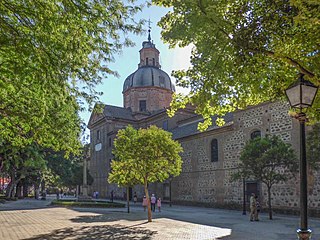
Talavera de la Reina is a city and municipality of Spain, part of the autonomous community of Castile–La Mancha. Its population of 83,303 makes it the second most populated municipality of the province of Toledo and the fourth largest in the region.
Pinto is a municipality in the Community of Madrid, Spain. It is located in the central area of the Iberian Peninsula at an altitude of 604 meters, 20 kilometers south of Madrid, and covers 62.7 square kilometers. In 2018, Pinto had a population of 51,541. It is home to the Torre de Pinto, the Pinto Castle, and the Éboli Tower, which is a 14th-century tower used as a prison for nobles who fell out of favor with the king.

Ocaña is a municipality of Spain, in the province of Toledo, Castilla–La Mancha.
Torrijos is a municipality in the province of Toledo, Castilla–La Mancha, Spain. As of 1 January 2022, it had a registered population of 13,678. The municipality spans across a total area of 17.34 km2.
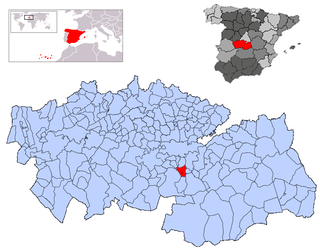
Ajofrín is a municipality located in the province of Toledo, Castile-La Mancha, Spain. As of 2008, it was home to 2328 inhabitants. Its name derives from the Arabic Al-Ya'rar, or "the place of the Yafar or Jafar".

Bargas is a municipality of Spain located in the province of Toledo, Castilla–La Mancha.

Lagartera is a municipality of Spain located in the province of Toledo, Castilla–La Mancha. The municipality spans across a total area of 81.02 km2 and, as of 1 January 2020, it has a registered population of 1,354.
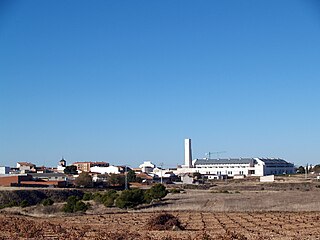
Noblejas is a municipality of Spain located in the province of Toledo, Castilla–La Mancha. The municipality spans across a total area of 69.67 km2 and, as of 1 January 2021, it has a registered population of 3,721. Radio Exterior has transmitter its 0.5 km south of Noblejas. It belongs to the traditional comarca of Mesa de Ocaña.

Nombela is a municipality of Spain belonging to the province of Toledo, Castilla–La Mancha. According to the 2006 census (INE), the municipality has a population of 981 inhabitants.

Quintanar de la Orden is a municipality of Spain located in the province of Toledo, Castilla–La Mancha. The municipality spans across a total area of 87.87 km2 and, as of 1 January 2023, the municipality has a registered population of 11,119. It is part of the Mancha Alta de Toledo comarca.
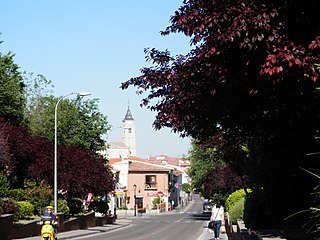
Seseña is a municipality of Spain located in the province of Toledo, Castilla–La Mancha. It is part of La Sagra comarca. As of 1 January 2020, the municipality has a population of 27,066.
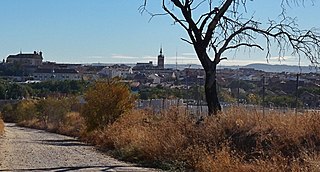
Illescas is a town and municipality of Spain located in the province of Toledo, Castilla–La Mancha. The municipality spans across a total area of 56.75 km2 and, as of 1 January 2020, it has a registered population of 30,229, which makes it the third most populated municipality in the province. It belongs to the traditional comarca of La Sagra.

La Sagra is a region in central Spain lying between the cities of Madrid and Toledo. In a wider sense, it includes municipalities belonging to both the south of the Community of Madrid and the north of the province of Toledo. In a more restricted sense, concerning the municipalities in Castilla−La Mancha, the Toledan Sagra includes municipalities in the right (north) bank of the Tagus up to the northern provincial border with the Madrid region, whilst its Western limits are moot.

La Estrella, also known as La Estrella de La Jara, is a municipality of Spain located in the province of Toledo, autonomous community of Castilla–La Mancha. The municipality spans across a total area of 77.23 km2 and, as of 1 January 2023, it has a registered population of 298.

The National Council of the Movement, was an institution of the Franco dictatorship of a collegiate nature, which was subordinated to the Head of State. Originally created under the name of the National Council of FET and the JONS on 19 October 1937 in the midst of the Civil War, it would continue to exist until 1977, following the death of Francisco Franco and the dismantling of institutions of his regime.
Fernando Jiménez de Gregorio was a Spanish historian. He served as official cronista of the Province of Toledo.


















